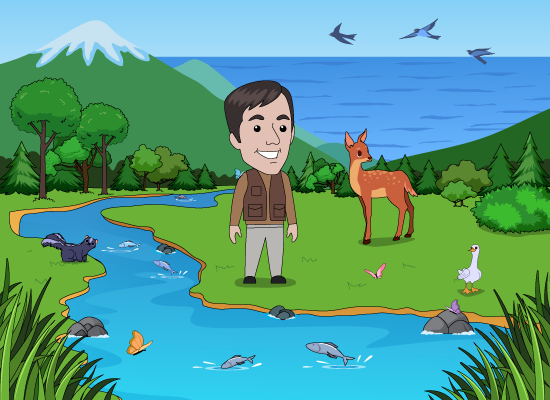How to Protect 30% of the Planet and Achieve Other Lofty Goals
In 2011, Colombia had greater rainfall in one month than it typically has in an entire year. The ensuant flooding from the Magdalena and Cauca rivers caused such horrific loss of life and damage that the government acted immediately to avoid a repeat occurrence. It earmarked a huge sum of money for “infrastructure investment” and invited ideas on how to spend it from a wide array of leaders, including me.
I flew down to meet the Minister of the Environment, prepared for an uphill battle as I sought to convince him of nature-based solutions. The first thing I noticed when looking for his office was that the official title had been changed. It was now the Ministry of Environment and Economic Development. I was impressed. These two imperatives should be intertwined more often in my view.
Almost as soon as I sat down, the Minister put up guardrails against any overly lofty ideas. “Look,” he said, “We’re not in the same position as you NGOs. We have a country whose economy has to grow. Our people need jobs. And we need to keep our people safe from dangers like this recent horrific flood. Of course, we also want to protect our precious natural systems. But I only want to hear about environmental protection that makes economic sense and works for our people.”
It couldn’t have been a better opening for me. “Then instead of building levees up and down the river, you should consider floodplain restoration,” I suggested. “Floodplains will absorb the floodwaters in a low cost, very effective way, while also nourishing the lands, making them more fertile for agriculture. They’ll also enhance biodiversity.”
“Okay,” he responded. “If your proposal really does cost less and provide more benefits, we’re in. But first, you have to prove it. The stakes are high. Show our engineers and scientists exactly what your proposal will cost and exactly what it will do for our people and our country.”
To me, this experience captures three key standards we should keep in mind as we pursue ambitious environmental goals. Environmental initiatives will most likely succeed when they:
- Also improve economic, health, or security outcomes
- Are backed by evidence, data, and science
- Can be supported by a diverse group of everyday people, policymakers, scientists, engineers, business leaders, and environmentalists of all stripes.
So how does this work in practice? Let’s look at a timely example.
Speaking of ambition. . . the 30×30 Campaign
Were you excited about the recent news that President Biden pledged to protect 30% of the country’s terrestrial and ocean areas by 2030? I was. What a positive and welcome change from the prior administration.
And, as you probably know, the global news is even better. On January 11th, more than 50 countries pledged to do the same ahead of the UN’s Conference of the Parties to the Convention on Biological Diversity taking place later this year in China. The idea is to do for biodiversity what the 2015 Paris COP did for climate. This global effort is called the 30×30 campaign.
But conserving 30% of oceans and global lands in just nine years sounds very ambitious. Are we dreaming? Can we really pull this off? Let’s examine what we know.
